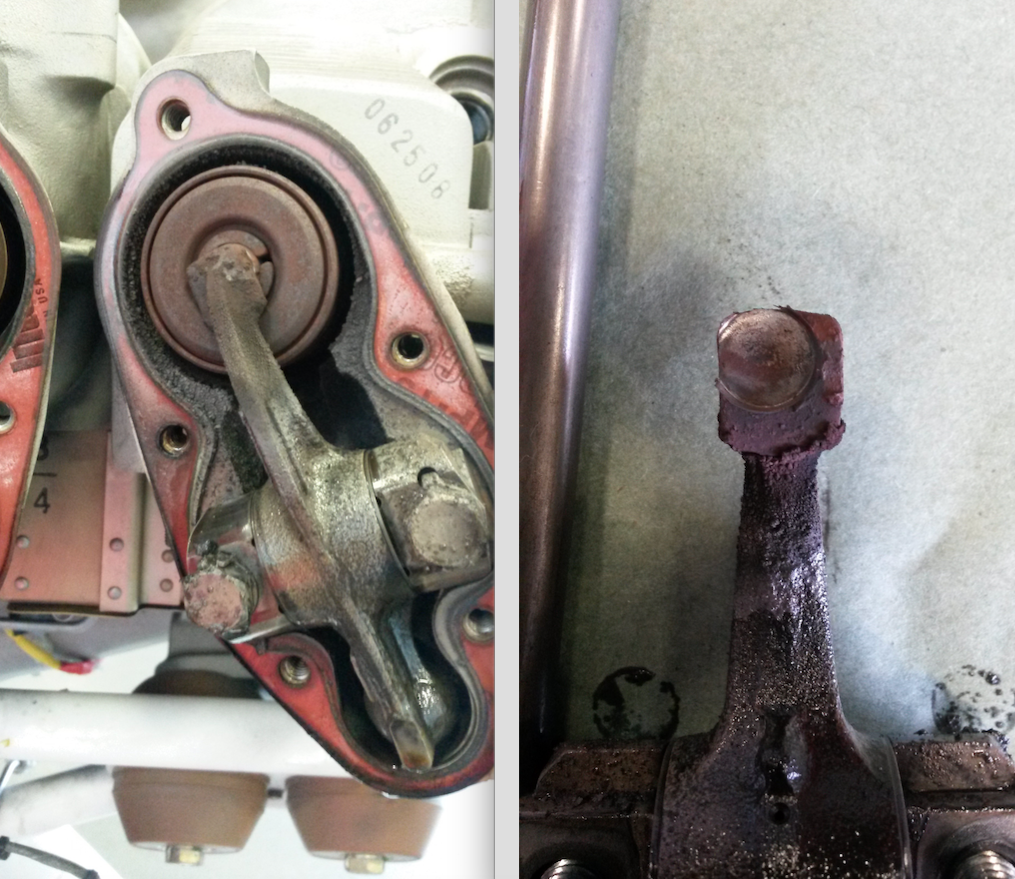One of the classic lines in Casablanca comes from Claude Rains playing Captain Renault: “Round up the usual suspects.” In engine monitor analysis, when we see an EGT or CHT diverge from normalcy, it’s often the result of a clogged injector, a rogue spark plug or an induction leak. It could also be bogus data from a failing probe or a loose connection. But sometimes those suspects are examined and pronouced innocent, and we have to explore what else could be causing the problem.
Let’s start with a Cirrus SR22 with a Continental IO-550-N. The oil analysis report flagged higher levels of copper and brass/bronze, noted increased blow-by, and suggested borescoping the valves and valve guides. Here’s the flight data.

Things look pretty normal except for cylinder 5 – the green trace. Can we rule out the usual suspects? A clogged injector should cause EGT and CHT to be high when ROP and low when LOP. That doesn’t happen here. A bad plug could cause the misfire patterns seen here, but a bad plug should result in slower combustion and higher EGT, and that doesn’t happen here either. An induction leak should cause a leaner mixture resulting in higher EGT and CHT across the board – also not the case.
If you were going to borescope this engine, data suggests starting with cylinder 5. The scope revealed a valve not seating completely, and pulling the rocker cover revealed why.

Savvy has always championed oil analysis as a valuable tool for analyzing engine health. In this case oil analysis helped identify a problem and engine data analysis helped identify its location.
Next up is data from the Left engine of a Twin Cessna, an IO-520-MB. This is a 12-minute runup for a flight that was cancelled after this runup.

Again it’s cylinder 5 – the green trace – that’s of concern, although cylinder 3 – the yellow trace – looks like it has a slight case of what’s ailing 5. Could that be a clue? I think we can rule out injector and induction based on the patterns. The jumpiness of EGT 5 is something we sometimes see with a bad probe or loose connection, but that wouldn’t cause CHT 5 to be low, or cause EGT 3 to act up, or cause the reported engine roughness, so let’s focus somewhere else. A bad plug in cyl 5 should cause EGT to be higher – not lower – and a simultaneous bad plug in 3 seems unlikely.
What would cause spark weak enough to result in this EGT and CHT? And that attempts to become normal when power is increased at about the 8 minute mark? And marginal spark in a nearby cylinder? Maybe we should look at the mag…

One footnote — maintenance is expensive, so we don’t want to incur extra unnecessary charges, but sometimes just changing the order of what’s being done can help answer questions and increase our understanding without spending more money. In this case the A&P knew that cylinder 5 was the issue, so he began by pulling and cleaning the plugs, then testing them. If he had tested them before cleaning them, we would know whether a marginal plug contributed to the misfires, or whether the problem was only with the mag.
The shop’s goal and mindset is to fix the problem and get you back in the air. And in this case we know that the plugs in cylinder 5 passed the test before they went back in the holes. But it would have been easy to test the plugs and pronunce them healthy – or not – before destroying the evidence.